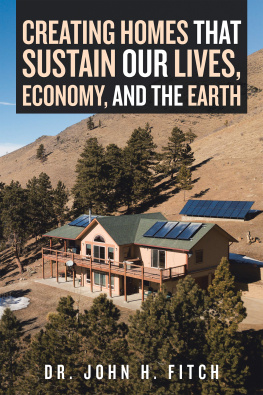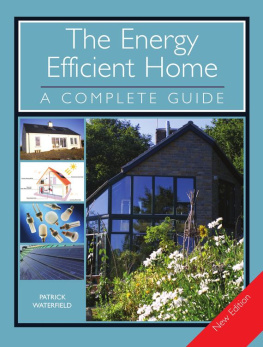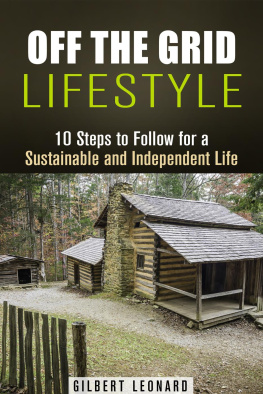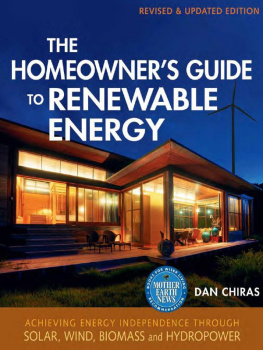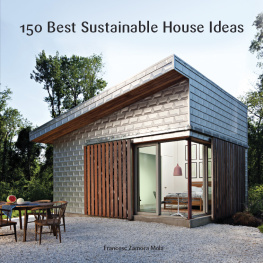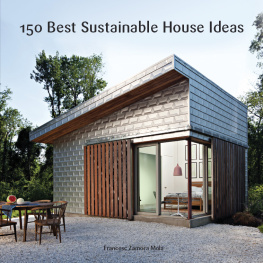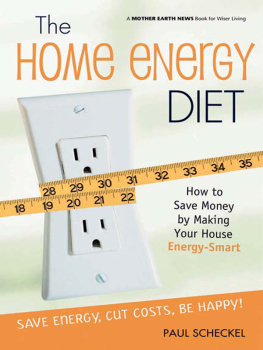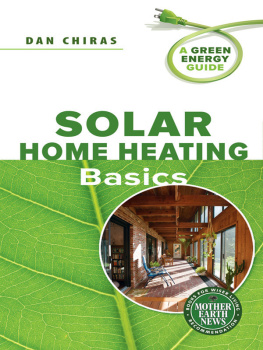CREATING HOMES THAT
SUSTAIN OUR LIVES,
ECONOMY, AND THE EARTH
DR. JOHN H. FITCH
Copyright 2020 by Dr. John H. Fitch.
Library of Congress Control Number: | 2020904257 |
ISBN: | Hardcover | 978-1-7960-9120-5 |
Softcover | 978-1-7960-9119-9 |
eBook | 978-1-7960-9118-2 |
All rights reserved. No part of this book may be reproduced or transmitted in any form or by any means, electronic or mechanical, including photocopying, recording, or by any information storage and retrieval system, without permission in writing from the copyright owner.
Rev. date: 04/20/2020
Xlibris
1-888-795-4274
www.Xlibris.com
804627
CONTENTS


T HE BOOK IS dedicated to former President Jimmy Carter for his ongoing support of sustainability and renewable energy, and to the far-sighted leaders and voters of California for supporting a solar energy mandate for all new h omes.
In 1979, President Jimmy Carter had the courage and fortitude to install solar panels on the White House and to champion the promise of sustainability and renewable energy worldwide. At the dedication of the solar panels, he said:
In the year 2000, this solar water heater behind me which is being dedicated today, will still be supplying cheap, efficient energyA generation from now, this solar heater can either be a curiosity, a museum piece, an example of a road not taken, or it can be just a small part of one of the greatest and most exciting adventures ever undertaken by the American pe ople.
In retirement, President Carter has continued to advance that cause as a volunteer with Habitat for Humanity and as an outspoken advocate for sustainability and renewable resources. At the age of 96, he and Rosalynn have given the village of Plains, Georgia an incredible gift! They leased 10 acres of land near their home and, working with SolAmerica, built a 1.3-megawatt solar farm that will supply more than 55 million kilowatt hours of renewable solar energy annually to the citizens of Plains, more than half of the towns total annual electricity consumption! The Carters truly personify the challenge of being the change that they wish to see in the w orld.
In 2019, the many individuals, villages, and elected leaders in California supported state legislation requiring mandatory solar panel installations on all new homes that are not shaded from the sun. In an interview with the Mercury News , California Energy Commissioner Kent Sasaki said, This is the beginning of a substantial improvement in how we produce energy and reduce the consumption of fossil fuels. This legislation will provide a useful model for other states who see the strategic as well as the economic advantages of renewable energy produc tion.
Sometimes it takes a village to raise a person who then becomes a catalyst for future change that greatly improves the world. In other cases, the village becomes the catalyst. I dedicate this book to two catalystsJimmy Carter and the State of Californiawho have courageously advanced sustainable building and the use of renewable energy resou rces.


A S EXECUTIVE DIRECTOR of the Institute for the Built Environment and Professor Emeritus of Construction Management at Colorado State University, I am honored to write the Foreword for Creating Homes That Sustain Our Lives, Economy, and the Earth by Dr. John F itch.
I have known John for more than a decade and have been impressed with his work as an active scientist and leader conducting research, teaching, and helping to develop policies in the areas of ecosystems conservation, wildlife ecology, and sustainability. His slogan is sustaining tomorrow today, and he believes in working to integrate economic, environmental, and societal planning and development for a sustainable future. His work has reflected his belief that he and his students should work on government and community levels as well as on academic pursuits. For example, he has worked as a Fellow in the Carter Administration on sustainability and wildlife conservation. John held appointments on the Tufts University faculty and as chief scientist for the Massachusetts Audubon Society and also directed publication of The Energy Savers Handbook for Town and City People published by Rodale P ress.
Although Dr. Fitch is not an architect or engineer, he has had a real passion for sustainable housing. While at Florida Gulf Coast University, he and his students worked with the city of Bonita Springs on an EPA grant to develop Southwest Floridas first affordable sustainable housing project. Dr. Fitch and his students were invited by EPA in 2002 to exhibit their designs on the Washington Mall during Earth Day festivities. Subsequently, Dr. Fitch decided to take a sustainable home prospecting vacation through the Rocky Mountains to find a place where he could relocate, build, and live in a sustainable demonstration home. I was pleased John selected the Fort Collins, Colorado area in which to build his home.
I gladly incorporated Johns project into a graduate course in sustainable technology at Colorado State University. John joined me in providing guidance to the twenty construction, design, and engineering students, each of whom subsequently performed specific green design and construction research. The final report the students developed, more than 100 pages in length, provided in-depth meaningful research and recommendations for optimizing the homes performance while minimizing its environmental impacts. During the latter part of the course, students interviewed prospective builders; their reviews were quite helpful in selecting a builder who was especially interested in building a sustainable demonstration home.
Dr. Fitch then applied many of the sustainable aspects identified by students in directing the building of his sustainable home. He worked with the builder and subs to develop a creative team that could use sustainable strategies to full advantage as the home was being built. Construction on his home began in September of 2006 and was completed on July 7, 2007. In the 12 years since his home was completed, he has welcomed more than 600 visitors including students, the general public, and energy experts from four different countries. He also has had opportunities to monitor his home in terms of energy use, solar energy production, and dependability. Blower door tests by Poudre Valley Rural Electric Association (PVREA) confirmed that the home was the tightest one they had ever tested. Because Dr. Fitchs solar electric cells produce more power than he needs, he is able to sell power back to P VREA.
I encouraged Dr. Fitch to describe his impressive sustainable home and report on the tremendous advantages that such a home can provide for peoplewhether they live in rural areas, suburban neighborhoods or cities and whether they live in houses, apartments, or condos. I hope you will find this book helpful as a guide to remodel your current residence or build a sustainable home, one that can significantly reduce your utility bills and improve indoor air quality. An additional benefit is knowing that you are saving money as well as creating both a healthier indoor environment and a healthier planet as you use renewable resou rces!
Next page
